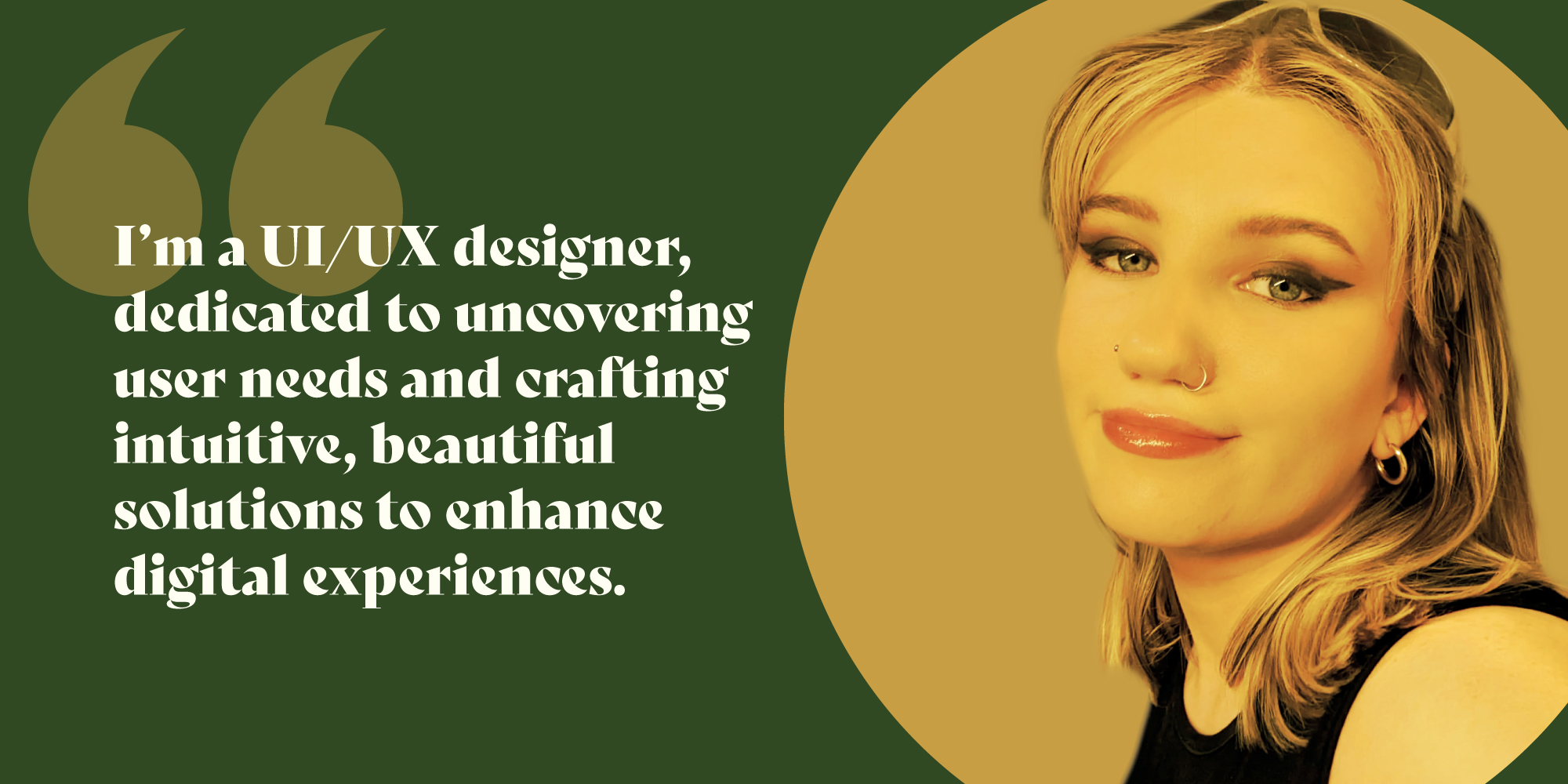

Hi, I'm Orla. I'm a UX/UI designer based in Northern Ireland. I love diving into the minds of users and finding their wants and needs. I believe thorough user research and continuous skill development are key to crafting beautiful and intuitive journeys for users.
When I'm not working, you'll find me with my headphones on, lost in the world of an audiobook or podcast, or attempting to crochet. I also enjoy walking in the countryside surrounding my home.
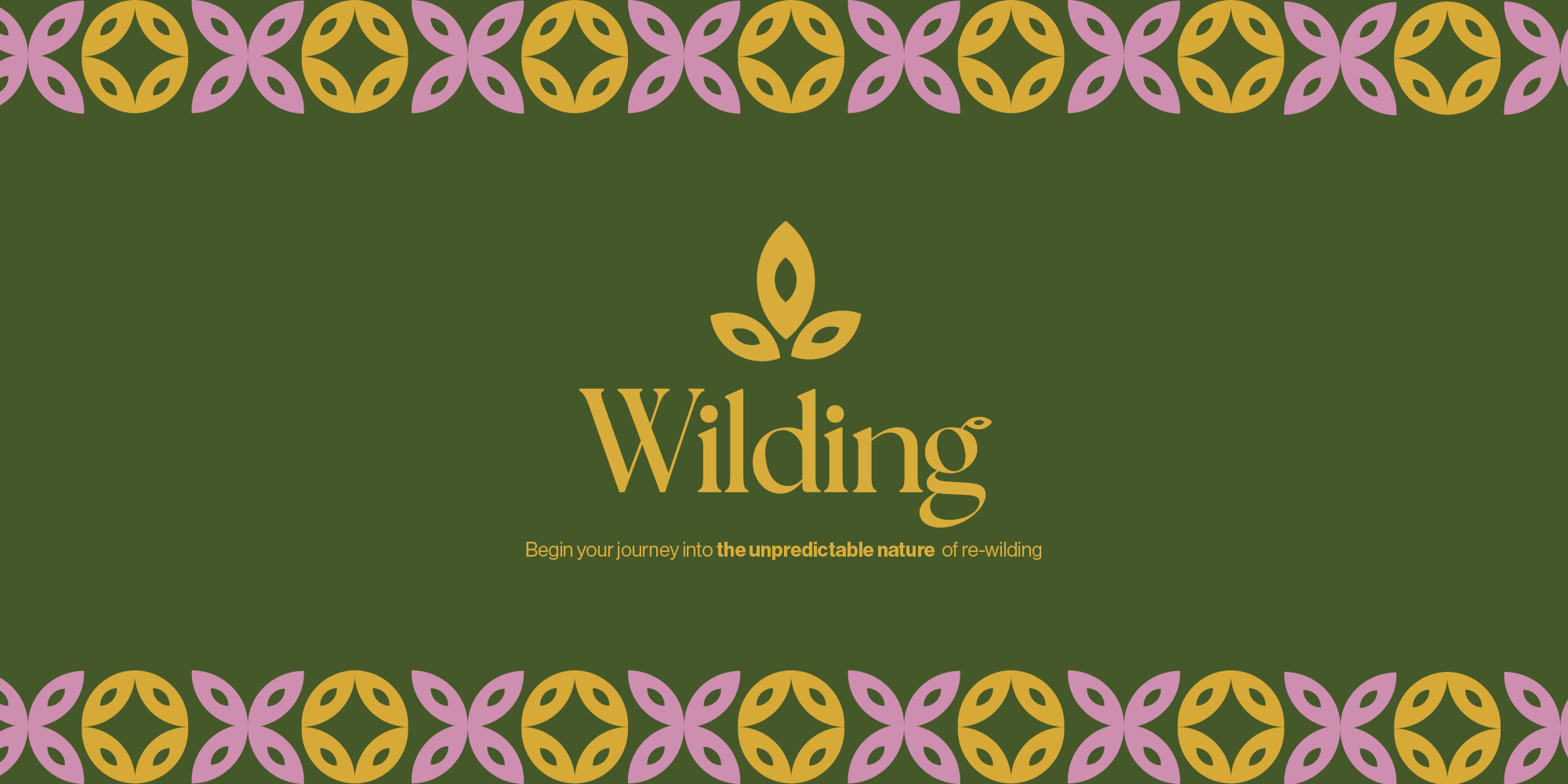
Northern Ireland is one of the worst countries in the world for biodiversity loss. This is due to our growing urban areas and the destruction of natural habitats. This has caused 12% of our native species to be under threat of extinction, such as the red squirrel. Biodiversity loss means that there isn’t enough diversity in plant and animal species to support our ecosystem. We rely on this ecosystem for food water and energy and thus good biodiversity is essential to our lives.
To solve this issue, we need to work together to use the space we have access to, whether it’s a private garden or community area, to protect our native species . In a survey conducted in the Republic of Ireland, 90% of the population said they would be willing to play their part in improving biodiversity but 56% said that they wouldn’t know where to start. This leaves a gap in the market for a solution that can bridge the gap between people’s interest in helping biodiversity and the education and guidance they need to do it.
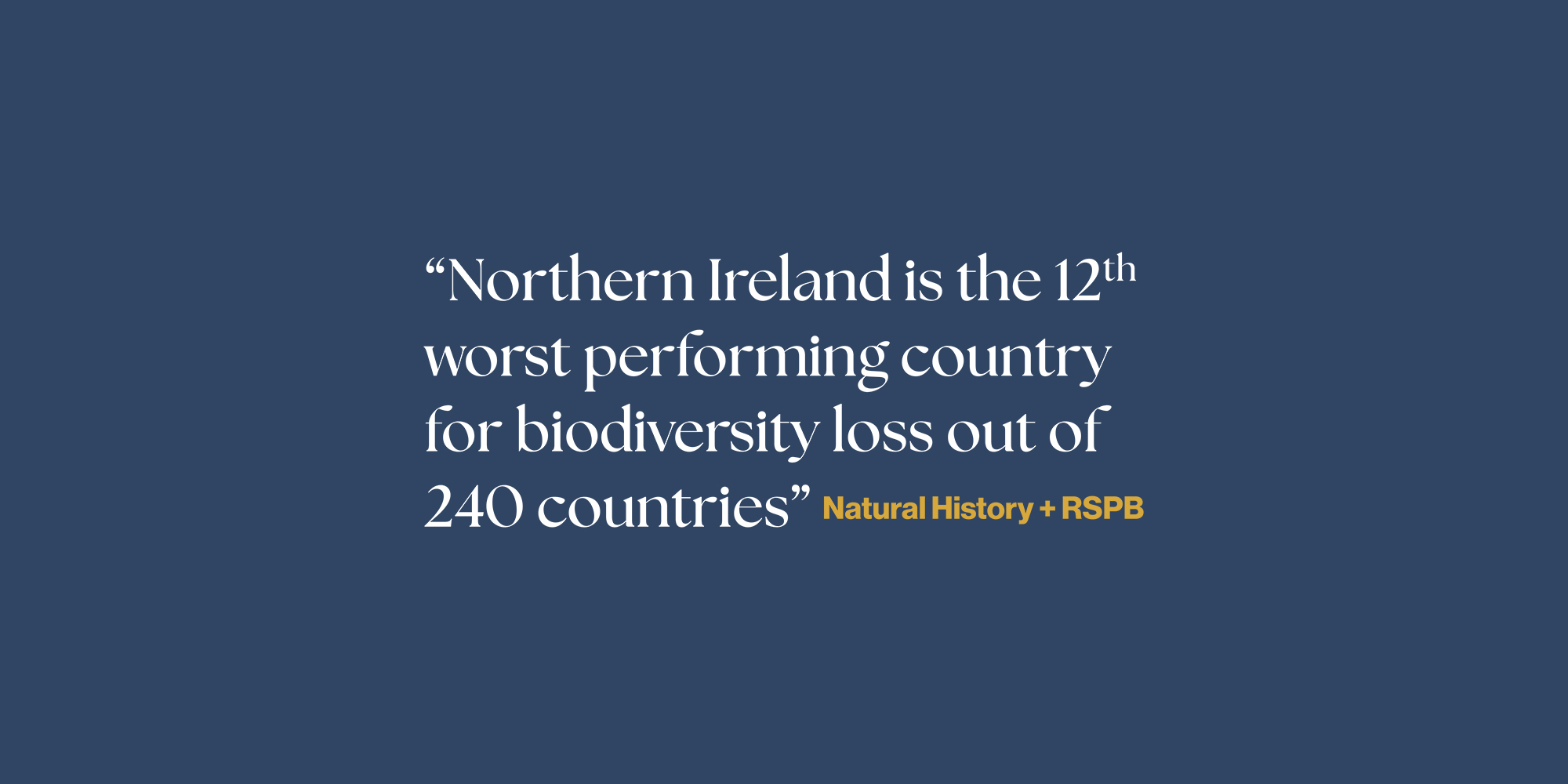
Research has been a major focus in my process of developing Wilding. It was vital that I studied Northern Irish biodiversity such as, our native plants and animals, to ensure that Wilding was using accurate and relevant information. Delving into user research helped me narrow down my target market, along with their wants and needs. To do this, I created surveys which I sent out to the public. I got 62 responses which varied widely age, from 16 to 65+. 64.5% of respondents said they would be willing to take part in re-wilding projects. 80.6% said that seeing others in the community doing the same would encourage them. This confirmed that people are interested in helping biodiversity and being part of community action.
I also sent a questionnaire to professionals in biodiversity and got responses from people in local organisations such as Ulster Wildlife, Butterfly Conservation and Caomhnú Árann. They alerted me to the issue of keeping members of the public engaged and motivated to complete projects. “People look for quick fixes. Unlike the immediacy of social media, gardens and biodiversity support develop, change and find balance over time...” I read the book ‘Engaged: Designing for Behavior Change’ by Amy Bucher. This gave me some really useful insights into how to design a product that relies on the user’s change in routine. She states. “Users can’t make an informed decision about whether they’re willing to put up with the drawbacks to gain the advantages of the product. And that means they’re less likely to stick with it.” This steered me towards the concept of using AI-generated image technology to show the users, upfront, how their outdoor space will look with wild flowers or animal habitats. This way, users that accept the realistic outcome are more likely to persist and complete the maintenance required for re-wilding projects. Biodiversity professionals also stated that it was imperative Wilding considered environmental factors such as the soil type, wind levels and sunlight of each user’s space. These factors affect the plant species that can be used and therefore Wilding’s guides should be unique to each user and their space. I created the concept of an AI, similar to that of Google lens, that would scan the user’s outdoor space to assess the environmental conditions and identify existing plant species. Wilding can then take this information and recommend specific wildflowers and animal habitats that will protect and improve the ecosystem that already exists in the user’s space.
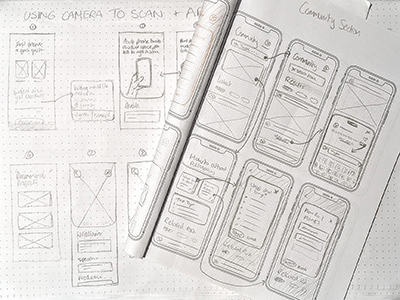

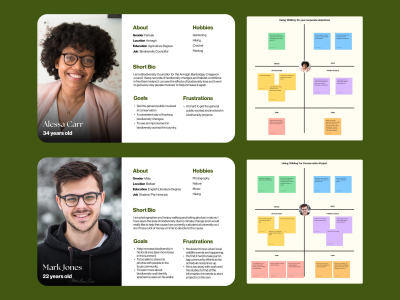
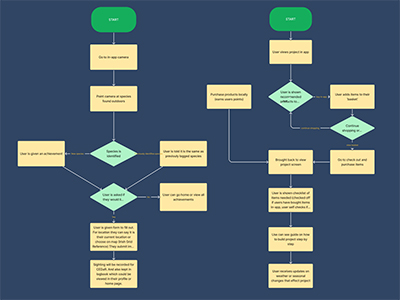
Wilding was developed with continuous research and iterations. I used a pen and paper to determine the user’s overall journey in the app. I then used FigJam to create clear flow diagrams. I considered different layout ideas using a mobile ui sketchbook and then moved to Figma to design and prototype the screens. I am confident in these decisions as they were informed by research into the user, biodiversity professionals and design principles.

Wilding is a mobile application that brings enthusiasts and experts together to help rebuild our native spaces. Wilding’s AI function can make project design recommendations to meet the needs of the user’s outdoor space, ensuring that it balances the surrounding nature. Wilding has other incredible features such as the ability to identify a species with your phone camera and log them. There is also a community area where users can share updates and ask questions about their projects.
I thoroughly enjoyed creating Wilding. I learned important skills in prioritisation, which allowed Wilding to prototyped in time. I was able to conduct in-person user tests of my prototype which was great for feedback and spotting problems. There is still a lot of areas for potential development in Wilding. For example, Wilding could partner with local wildlife organisations and councils to use land that is currently out of use for biodiversity improvements.
